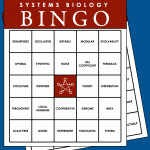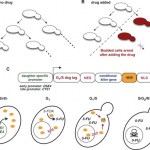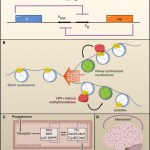friends
Because of my recent interest in autonomous, biologically inspired robots, my friend Tami sent me some fascinating links about designs and concepts for future flesh eating robots.
From New Scientist, furniture that captures vermin and uses the biomass to power fuel cells that run small electronics:
From Wired, Human corpse powered robots being developed by the Defense Department:
From the file marked "Evidently, many scientists have never seen even one scary sci-fi movie": The Defense Department is funding research into battlefield robots that power themselves by eating human corpses. What…
Another Hydrocalypse Industries original production, the Beard-ome presents imaginary work on the genomics of the beard. What's lying beneath your beard?
Cellularity is a new project by James King, a speculative designer working on biotechnology and interaction design. The project focuses on the potential future of smart pharmaceuticals, drug molecules surrounded by membranes that over time as technology advances may come to more and more closely resemble actually living things. He proposes a cellularity scale from totally non-living to really alive artificial cells. This quantification of "aliveness" in a way is something that may need to be done if some of the proposals of synthetic biology come to fruition. When does a membrane surrounding…
Carboxysomes are small compartments inside photosynthetic bacteria where the machinery for capturing carbon dioxide is concentrated. You can see carboxysomes and their characteristic virus-like shape when you look at slices of these bacteria under an electron microscope:
Until recently, no one had looked at carboxysomes under the microscope in cells that were still alive. My labmates Dave and Bruno developed a way to label carboxysomes with fluorescent proteins and track them under a microscope as the cells grow, and their amazing paper in Science details some of the fascinating systems they…
My labmates and I love Lady Gaga. Like, love love love. Enough to make a parody fan video of Bad Romance. It is my pleasure to present to you "Lab Romance", a production of Hydrocalypse Industries. Enjoy!
Lyrics after the jump!
ø⸨°º¤ø⸸âø¤º°¨¸âø¤º°¨ ¨°º¤øâ¸LADYâø¤º°¨ âø¤º°¨ GAGA `°º¤ø¨°º¤ø⸸âø¤º°¨¸âø¤º°¨ ¨°º¤ø
Music by Lady Gaga, lyrics by Tami Lieberman and Jake Wintermute, performed by Jake Wintermute, editing by me and Patrick Boyle, dancing by the Silver Lab.
Oh-oh-oh-oh-oooh!
Oh-oh-oooh-oh-oh!
Caught in a lab romance…
My labmate Bruno's newest paper, "A synthetic circuit for selectively arresting daughter cells to create aging populations" came out today in the journal Nucleic Acids Research (and it's open access!). Using a cleverly designed genetic circuit that activates cell growth arrest in newly divided cells only in the presence of a drug, Bruno was able to create a population of yeast made up of only old cells, called the "daughter arrester."
You would think that yeast, being so single celled and bread-y, wouldn't be able to tell us much about human biology or anything as complex as aging, but many…
Teachers' Domain, a digital media resource for teachers, profiled Karmella Haynes, one of my amazing labmates!
There's a fun video of Karmella talking about her work on synthetic biology devices to track cancer cells and about careers in science streaming on the Teachers' Domain website. You should all check it out, she's an incredible scientist, artist, and teacher--a true inspiration!
My friend Devin's essay, "Making Cellular Memories" just came out today in Cell (and it's open access!) It's a great look at how natural cells and synthetic biological systems use feedback loops in order to maintain memory of past events. Like whole animals, cells need to remember what happened to them before in order to respond appropriately to new signals. Synthetic biologists can use memory to track cells that have experienced a certain input in a heterogeneous population, and to activate different responses depending on the historical context.
In sum, both nature's wisdom and previously…
Want to know how much you'd enjoy an experience? You're better off asking someone who has been through it, even if they're a complete stranger, than to find out information for yourself. This advice comes from Daniel Gilbert from Harvard University, who espoused it in his superb book Stumbling on Happiness. Now, he has found new support for the idea by studying speed-daters and people receiving feedback from their peers.
In the first study, he found that female students were better able to predict how much they would enjoy a speed-date if they listened to the experiences of strangers than if…
So last week I asked "how low", Things Break provided an answer, and Roger continued his love-to-hate realtionship with Real Climate folks. The sopa opera continues, spilling out into Real Life, as Gavin seems to want some formal retraction. Being called a thief is no small matter, and like most of Rogers conclusions, this is just not born out by the evidence. He is once again finding the smallest bit of wiggle room and prying it open until it is wide enough for his ego to fit through!
(And BTW, none of this matters if you are interested in what is actually going on in Antarctica.)
But…




